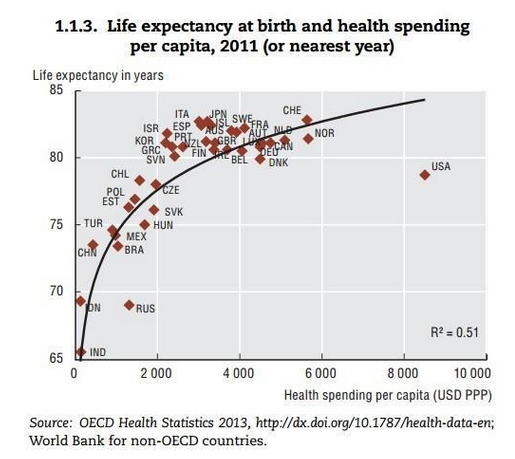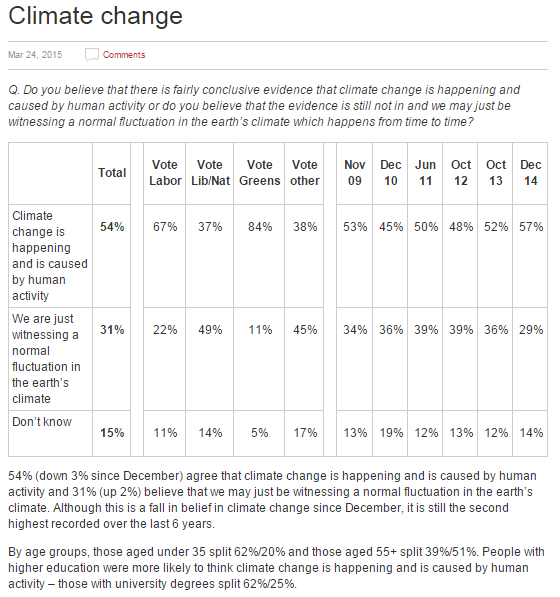Military spending has been in decline in many countries throughout the world and Australia is no exception as the charts below show.
There are several ways to consider and compare global military spending. One way is to consider the level of spending as a percentage of a country's GDP. Comparing military spending as a percentage of GDP allows us to consider how much of economic growth is taken up with military expenditures.
While the United States has the world's largest military by far it ranks only 13th on the level of spending as a percentage of GDP. (see tables at the bottom for rankings)
Australia's military spending as a percentage of GDP is below the world average and is now below the average for East Asia and the Pacific. We still spend proportionally more than Indonesia, although if the Indonesian economy becomes considerably larger than the Australian economy over coming years, as many commentators believe is likely, then its total spend will also be considerably larger than Australia's.
Australia also spends less than comparably wealthy countries represented by the OECD.
US military spending has declined over recent years, whilst China's has increased. Since 2004 Chinese military spending has increased by 170 per cent, whilst its GDP Has increased by 140 per cent. Still China only spends 2.05 per cent of its GDP while the US spends 3.81 per cent. Japan, due to its pacifist constitution still spends just under 1 per cent.
The table below constructed from SIPRI databases shows basic measure alluded to above of total military spending converted to US Dollars. It shows the top 60 military spenders in the world (New Zealand comes in at 60).
Figures are in US$m. at 2013 prices and exchange rates.
Source: World Bank
There are several ways to consider and compare global military spending. One way is to consider the level of spending as a percentage of a country's GDP. Comparing military spending as a percentage of GDP allows us to consider how much of economic growth is taken up with military expenditures.
While the United States has the world's largest military by far it ranks only 13th on the level of spending as a percentage of GDP. (see tables at the bottom for rankings)
Australia's military spending as a percentage of GDP is below the world average and is now below the average for East Asia and the Pacific. We still spend proportionally more than Indonesia, although if the Indonesian economy becomes considerably larger than the Australian economy over coming years, as many commentators believe is likely, then its total spend will also be considerably larger than Australia's.
Australia also spends less than comparably wealthy countries represented by the OECD.
| Rank | Country | 2013 |
| 1 | Oman | 11.48 |
| 2 | Saudi Arabia | 8.99 |
| 3 | Afghanistan | 6.24 |
| 4 | Israel | 5.63 |
| 5 | Angola | 5.01 |
| 6 | Algeria | 4.95 |
| 7 | Azerbaijan | 4.68 |
| 8 | Lebanon | 4.36 |
| 9 | Russian Federation | 4.19 |
| 10 | Armenia | 4.10 |
| 11 | Yemen, Rep. | 3.93 |
| 12 | Morocco | 3.90 |
| 13 | United States | 3.81 |
| 14 | Bahrain | 3.77 |
| 15 | Jordan | 3.56 |
| 16 | Mauritania | 3.56 |
| 17 | Iraq | 3.54 |
| 18 | Colombia | 3.44 |
| 19 | Pakistan | 3.39 |
| 20 | Singapore | 3.27 |
| 21 | Kyrgyz Republic | 3.24 |
| 22 | Namibia | 3.15 |
| 23 | Ecuador | 3.11 |
| 24 | Swaziland | 2.96 |
| 25 | Ukraine | 2.93 |
| 26 | Zimbabwe | 2.78 |
| 27 | Georgia | 2.74 |
| 28 | Sri Lanka | 2.71 |
| 29 | Korea, Rep. | 2.60 |
| 30 | Brunei Darussalam | 2.56 |
| 31 | Greece | 2.46 |
| 32 | India | 2.45 |
| 33 | Turkey | 2.33 |
| 34 | United Kingdom | 2.30 |
| 35 | France | 2.24 |
| 36 | Burundi | 2.24 |
| 37 | Vietnam | 2.18 |
| 38 | Portugal | 2.17 |
| 39 | Serbia | 2.17 |
| 40 | Uganda | 2.16 |
| 41 | Lesotho | 2.15 |
| 42 | China | 2.05 |
| 43 | Botswana | 2.02 |
| 44 | Tunisia | 2.01 |
| 45 | Chile | 1.96 |
| 46 | Estonia | 1.96 |
| 47 | Kenya | 1.95 |
| 48 | Uruguay | 1.87 |
| 49 | Timor-Leste | 1.81 |
| 50 | Poland | 1.79 |
| 51 | Zambia | 1.69 |
| 52 | Egypt, Arab Rep. | 1.67 |
| 53 | Croatia | 1.66 |
| 54 | Australia | 1.63 |
| 55 | Cambodia | 1.60 |
| 56 | Paraguay | 1.60 |
| 57 | Bulgaria | 1.58 |
| 58 | Italy | 1.58 |
| 59 | Montenegro | 1.57 |
| 60 | Malaysia | 1.55 |
| 61 | Thailand | 1.52 |
| 62 | Bolivia | 1.45 |
| 63 | Nepal | 1.43 |
| 64 | Peru | 1.42 |
| 65 | Norway | 1.41 |
| 66 | Burkina Faso | 1.41 |
| 67 | Mali | 1.41 |
| 68 | Brazil | 1.40 |
| 69 | Congo, Dem. Rep. | 1.40 |
| 70 | Denmark | 1.38 |
| 71 | Bangladesh | 1.37 |
| 72 | Malawi | 1.36 |
| 73 | Belarus | 1.35 |
| 74 | Fiji | 1.34 |
| 75 | Germany | 1.34 |
| 76 | Cameroon | 1.34 |
| 77 | Romania | 1.33 |
| 78 | Gabon | 1.32 |
| 79 | Albania | 1.30 |
| 80 | Netherlands | 1.29 |
| 81 | Philippines | 1.28 |
| 82 | Finland | 1.27 |
| 83 | Kazakhstan | 1.25 |
| 84 | Honduras | 1.24 |
| 85 | Macedonia, FYR | 1.24 |
| 86 | Venezuela, RB | 1.21 |
| 87 | South Africa | 1.17 |
| 88 | Sweden | 1.17 |
| 89 | Tanzania | 1.15 |
| 90 | Bosnia and Herzegovina | 1.13 |
| 91 | Rwanda | 1.11 |
| 92 | El Salvador | 1.10 |
| 93 | Czech Republic | 1.08 |
| 94 | Guyana | 1.07 |
| 95 | Belize | 1.04 |
| 96 | Belgium | 1.04 |
| 97 | Benin | 1.04 |
| 98 | Seychelles | 1.03 |
| 99 | Canada | 1.01 |
| 100 | New Zealand | 1.00 |
| 101 | Japan | 0.99 |
| 102 | Spain | 0.94 |
| 103 | Indonesia | 0.90 |
| 104 | Jamaica | 0.85 |
| 105 | Ethiopia | 0.82 |
| 106 | Switzerland | 0.78 |
| 107 | Austria | 0.78 |
| 108 | Nicaragua | 0.76 |
| 109 | Liberia | 0.75 |
| 110 | Argentina | 0.74 |
| 111 | Mexico | 0.62 |
| 112 | Dominican Republic | 0.61 |
| 113 | Papua New Guinea | 0.57 |
| 114 | Ireland | 0.55 |
| 115 | Ghana | 0.53 |
| 116 | Madagascar | 0.51 |
| 117 | Luxembourg | 0.51 |
| 118 | Cabo Verde | 0.50 |
| 119 | Guatemala | 0.48 |
| 120 | Nigeria | 0.47 |
US military spending has declined over recent years, whilst China's has increased. Since 2004 Chinese military spending has increased by 170 per cent, whilst its GDP Has increased by 140 per cent. Still China only spends 2.05 per cent of its GDP while the US spends 3.81 per cent. Japan, due to its pacifist constitution still spends just under 1 per cent.
The table below constructed from SIPRI databases shows basic measure alluded to above of total military spending converted to US Dollars. It shows the top 60 military spenders in the world (New Zealand comes in at 60).
Figures are in US$m. at 2013 prices and exchange rates.
| Rank | Country | 2013 |
| 1 | USA | 640221 |
| 2 | China, P. R. | 188460 |
| 3 | Russia | 87836 |
| 4 | Saudi Arabia | 66996 |
| 5 | France | 61228 |
| 6 | UK | 57891 |
| 7 | Germany | 48790 |
| 8 | Japan | 48604 |
| 9 | India | 47398 |
| 10 | Korea, South | 33937 |
| 11 | Italy | 32657 |
| 12 | Brazil | 31456 |
| 13 | Australia | 23963 |
| 14 | Turkey | 19085 |
| 15 | Canada | 18460 |
| 16 | Israel | 16032 |
| 17 | Colombia | 13003 |
| 18 | Spain | 12765 |
| 19 | Taiwan | 10530 |
| 20 | Algeria | 10402 |
| 21 | Netherlands | 10328 |
| 22 | Singapore | 9759 |
| 23 | Poland | 9257 |
| 24 | Oman | 9246 |
| 25 | Iraq | 7896 |
| 26 | Indonesia | 7840 |
| 27 | Mexico | 7838 |
| 28 | Pakistan | 7641 |
| 29 | Norway | 7235 |
| 30 | Sweden | 6519 |
| 31 | Angola | 6095 |
| 32 | Greece | 5939 |
| 33 | Thailand | 5891 |
| 34 | Kuwait | 5815 |
| 35 | Chile | 5435 |
| 36 | Ukraine | 5338 |
| 37 | Venezuela | 5313 |
| 38 | Belgium | 5264 |
| 39 | Switzerland | 5053 |
| 40 | Malaysia | 4842 |
| 41 | Portugal | 4784 |
| 42 | Denmark | 4553 |
| 43 | Argentina | 4511 |
| 44 | Egypt | 4255 |
| 45 | South Africa | 4108 |
| 46 | Morocco | 4064 |
| 47 | Philippines | 3472 |
| 48 | Azerbaijan | 3440 |
| 49 | Viet Nam | 3387 |
| 50 | Finland | 3262 |
| 51 | Austria | 3230 |
| 52 | Peru | 2865 |
| 53 | Ecuador | 2803 |
| 54 | Kazakhstan | 2799 |
| 55 | Romania | 2521 |
| 56 | Nigeria | 2411 |
| 57 | Myanmar | 2211 |
| 58 | Czech Rep. | 2149 |
| 59 | Lebanon | 1936 |
| 60 | New Zealand | 1833 |














































.gif)
.gif)
.gif)
.gif)
.gif)
.gif)
.gif)
.gif)
.gif)
.gif)
.gif)
.gif)
.gif)
.gif)
.gif)
.gif)
.gif)
.gif)
.gif)
.gif)
.gif)
.gif)

